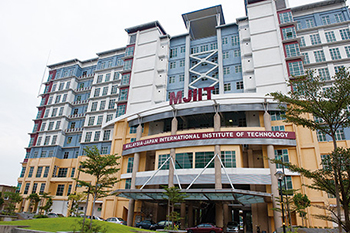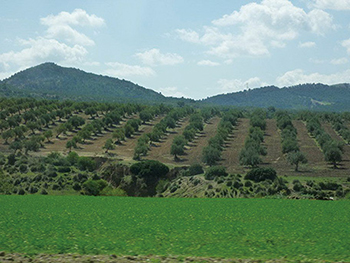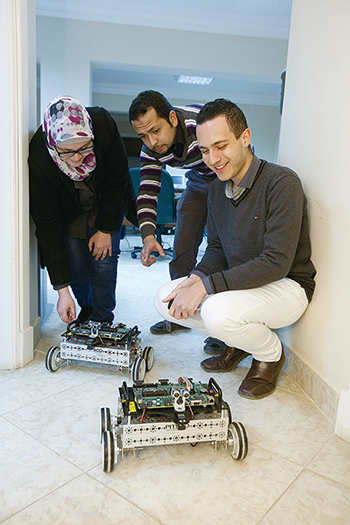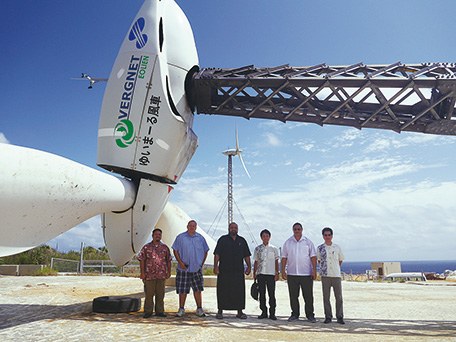(6) Promotion of Science, Technology and Innovation, and Research and Development
Data science (a method of conducting scientific research by analyzing massive amounts of data) and cyber security are gaining importance with the increasingly widespread use of Information and Communications Technology (ICT), along with the advances in the globalization of R&D and openness of research outcomes. In this connection, science, technology, and innovation are undergoing fundamental transformations.
Science and technology is a fundamental element that underlies national security, economic growth through innovation, and improvements in the lives and welfare of mankind.
The international community attaches importance to international cooperation that utilizes science and technology to solve issues, such as sustainable development of the economy and industry, global environmental issues, natural resource and energy issues, and health and sanitation issues. In today’s international community, which is witnessing fundamental changes in the science, technology, and innovation processes, there is a call for more strategic and proactive efforts in science and technology diplomacy.
< Japan’s Efforts >

The Malaysia-Japan International Institute of Technology (MJIIT) in Kuala Lumpur, Malaysia. (Photo: Natsuki Yasuda (studio AFTERMODE) / JICA)
Against this backdrop, Japan identifies science and technology diplomacy as an important pillar of Japanese diplomacy, supporting developing countries through promotion of science, technology, and innovation and R&D. Japan has promoted science and technology diplomacy by hosting the first G8 Science and Technology Ministers’ Meeting, as well as implementing the Science and Technology Research Partnership for Sustainable Development (SATREPS)* that integrates Japan’s ODA and science and technology budgets. The “Valorization of Bio-resources in Semi Arid and Arid Land for Regional Development” project is a SATREPS project implemented in Tunisia for the purposes of confirming the usefulness of plant resources growing in arid and semi-arid areas and developing technologies for their applications. As a result of this research, active ingredients such as anti-cancer and anti-allergy ingredients were discovered from plant constituents such as local olives. It is expected that these plant resources can be used to create industries, as well as produce ripple effects in countries in North Africa where the climate conditions are similar.

The team working on the Project for Valorization of Bio-resources in Semi Arid and Arid Land for Regional Development unveiled the functional properties of olives grown in Tunisia. The photo shows an olive plantation in Tunisia. (Photo: JICA)
Another effort of Japan involves strengthening assistance for overseas engineering universities to develop next-generation networks that are based on cooperation for human resources development. In Malaysia, an institution of higher education offering Japanese-style engineering education, the Malaysia-Japan International Institute of Technology (MJIIT), was founded as a culmination of the Look East Policy(Note 7) initiated in 1982. Japan provides support to MJIIT by purchasing equipment and supplies for education and research, and developing curriculums. Japan also collaborates with 26 universities in Japan to extend cooperation for establishing curriculums, dispatching Japanese faculty, and other objectives.

The Egypt-Japan University for Science and Technology (E-JUST) on the outskirts of Alexandria, Egypt. Graduate school researchers confirm the movements of a robot they have created. (Photo: Shinichi Kuno / JICA)
In addition, Japan provides contributions to the Asian Institute of Technology (AIT), an international organization located in Thailand and one of Asia’s leading graduate schools offering Master’s and PhD programs at the School of Engineering and Technology, the School of Environment, Resources and Development, and other schools. Japan’s contributions are used to provide scholarships to students studying remote sensing (satellite image analysis) taught by Japanese instructors, and contributes to human resources development in the field of remote sensing that utilizes artificial satellites constituting the crux of the ASEAN-Japan Disaster Management Cooperation.
In Egypt, since 2008 Japan has supported the establishment of Egypt-Japan University of Science and Technology (E-JUST), a national university based on the concept of “graduate school, research-centered, pragmatic, and international-standard education for a small number of students,” drawing on the features of Japanese-style engineering education. Universities from all over Japan have collaborated to dispatch faculty and staff to Egypt to provide lecture and research guidance, and support the development of curriculums. Through an “All-Japan” effort, Japan aims to share its science and technology education practices with Africa and the Middle East.
Japan also conducts a program to increase the adoption of Japanese companies’ technologies that are useful for the socio-economic development of developing countries. This program is expected to help promote the adoption of Japanese private companies’ advanced technological capabilities and diverse know-how in partner countries.
- *Science and Technology Research Partnership for Sustainable Development (SATREPS)
- SATREPS makes use of both Japan’s outstanding science and technologies and ODA to conduct research to solve global issues relating to the environment and energy, bio-resources, disaster risk reduction, and infectious diseases. Research institutes in developing countries and in Japan work together to implement international joint research with the goal of utilizing the research outcomes (diffusing research outcomes in society). The Ministry of Education, Culture, Sports, Science and Technology (MEXT), the Japan Science and Technology Agency (JST), and the Japan Agency for Medical Research and Development (AMED), in collaboration with the Ministry of Foreign Affairs (MOFA) and the Japan International Cooperation Agency (JICA), provide support to research institutes and researchers in Japan and partner countries.
- Note 7: The Look East Policy is Malaysia’s human resources development policy advocated in 1981 by then Prime Minister Mahathir bin Mohamad of Malaysia, with the objective of studying Japan’s development experience, work ethic, management philosophy, among other dimensions.
Tonga
Collaboration Program with the Private Sector for Disseminating Japanese Technology for the Natural Disaster-Proof Okinawan Tiltable Wind Turbine System
Technical Cooperation Project (Collaboration Program with the Private Sector for Disseminating Japanese Technology) (August 2014 to December 2015)
Tonga is an island country located in the Pacific Ocean comprised of around 160 islands, about 40 of which are inhabited. Taking advantage of its unique geographical traits, the country is actively introducing wind turbines as a means of generating renewable energy.

A ministerial delegation from Tonga inspected the superb properties of the Minami Daito Jima Island Tiltable Wind Turbine Power Station. (Photo: Progressive Energy Corporation)
However, Tonga is often struck by typhoons. Therefore, the country needs some kind of technology that can prevent the blades of the wind turbines from being damaged by powerful winds. In response to these needs, Progressive Energy Corporation, a company based in Okinawa Prefecture, which is also susceptible to typhoons, proposed the use of its tiltable wind turbine technology. This technology allows wind turbines that can be taken down when a storm approaches and then re-erected once the storm has passed.
Japan is assisting Tonga with this technology through the Collaboration Program with the Private Sector for Disseminating Japanese Technology. The tiltable wind turbines represent a sophisticated Japanese technology and they offer excellent features found nowhere else. These turbines can not only withstand powerful typhoon winds, but they can also be easily repaired on the ground when they break down, so there is no need to perform dangerous work in high places using a crane. As part of this program, Tonga’s Minister for Public Enterprises visited Okinawa and observed the installation of wind turbines with this technology, and engineers from Okinawa carried out fieldwork in Tonga for investigating whether technology matches the local demands.
Currently, reviews are underway together with the Government of Tonga on the introduction of this technology.
This project also achieves regional revitalization in Japan through exporting the local Okinawan technologies overseas. In the future, the goal is to expand this technology to other Pacific island countries with a connection to Okinawa Prefecture, through the Pacific Islands Forum.
